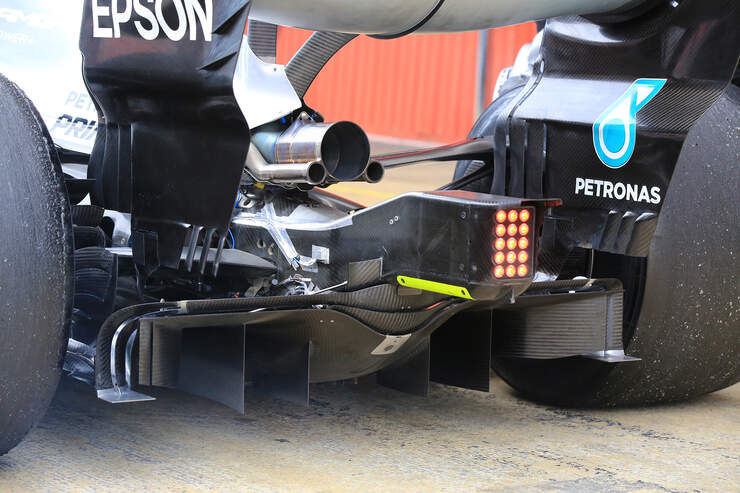Oh i see, they imagine the two elements flexing towards each other. I hadn't considered that but doesn't seem like a great explanation. It is much simpler to design a cambered profile to accelerate the flow here rather than worrying about them flexing together at a certain speed. The Mercedes wing has cambered profiles and looks relatively rigidly attached at the ends.diego.liv wrote:IF the article is spot on, based on what i recall about physics it could be this waymikhak wrote:How would flexing the wing help? Generally speaking there are two reasons to flex in F1, (1) to extend the geometry outside of the legality boxes e.g. front wing flexes closer to the ground, (2) flexing to reduce drag e.g. front wing flap reducing angle with speed.
You can put the T-wing more or less where you want in terms of height so i don't see a benefit of flexing downwards. What about flexing rearwards to get closer to the rear wing, why would this increase downforce. If anything it would unload the rear wing.
The only way i see flexing to benefit is to reduce the angle of attack of the the element itself so you can have an aggressive aoa for downforce generation but lose the drag at higher speed.
When you have two surfaces not parallel but inclined, even slightly, they will act as a funnel, compressing the air: the exit speed of the airflow is higher than airflow speed at the opening.
When the car reaches a certain speed, the double-T flexes enough to become a funnel (or maybe, the two Ts are already not parallel) and direct the flow passing through it, in the direction of the rear wing: wheter it is under, on, above the wing it's another matter for i know.
But the point is that the turbulent air coming through the double-T becomes cleaner/less turbulent and is directed where you want it
The t wing also sits high above the rear wing, I doubt accelerating flow above the rear wing will help downforce of the rear wing. I believe the t wing is simply producing some downforce by itself.















